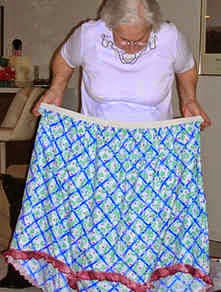This is how I hope readers view my work. I want to make colors so vibrant, emotions so real, and characters so likeable, that people can connect with the storyline and experience my tale through the eyes of the hero or heroine. That's the sign of an author who knows their craft.
I have confidence that I've achieved my goal in most of my books. Short stories, not so much. I find reviewers comment about the length, wishing for more, so that tells me that I've connected in some way, but there is only so much you can pack into fewer words.
New rules crop up every day and make me question where they come from. As someone who has been writing for over ten years now, I wonder if they existed way back when, and my editors weren't versed enough in writing themselves to know about them. When I first started, a great majority of the editorial staff on board were authors with credentials and experience not much more than my own. My first editor was very knowledgeable about historical facts, and I learned a ton from her about showing my story to the reader, but passive voice, head hopping, and cause before effect didn't seem to matter to her, nor did the numerous times I used "that" which later was cause for a rejection from another house.
Now my latest quirk has become the use of identifying tags that are now deemed unnecessary. Evidently, in the characters' POV, the reader will assume that the person doing the knowing, seeing, hearing, etc, is the main character, so sentences starting with she heard, she knew, she watched, she saw, etc., add nothing but words to the story.
Speaking of words...I tend to see lots of the above sentences in mainstream writing...in fact in most books I've read lately, so I wonder are authors adding them to up their word count. I also wonder if readers notice the number of times we use a character's name in paragraphs...especially when forced to in order to help them decipher between characters. I recently received a critique where the critiquer had highlighted every instance of the heroine's name, which seemed excessive to her. I wrote back and explained that through various editing experiences, I'd learned pronouns reflect back on the last person named, so if I introduced another character into the scene, I had to name my heroine to differentiate. Confusing? Yes! Of course, when you use too many pronouns, editors take issue with that too. It all comes down to being able to reword sentences or use phrases that allow a breather from the norm. I'm learning still. Writing is one career or pastime where you never stop acquiring new knowledge. The problem is determining whether it's factual or fiction. Not everything passed along is true or worthy of time spent changing your writing habits.
Each writer has a voice unique to themselves. Some houses abhor "ing" starts to sentences, but I assume that's because all authors haven't figured out how to use them correctly. I critiqued a story a few days ago which was worded something like,
Entering the room, her heart fluttered. If you read it quickly you may gloss over the fact that her heart entered the room. Where was the rest of her? I'm sure this is something I did in my earlier writing, but now I try to pay attention and send the whole body along with the heart.
Other publishers want us to avoid 'ly' words and use strong verbs. There are just some instances where you want to share with the reader that she spoke softly. She didn't whisper, but she wasn't speaking in her normal tone, so an 'ly' word is called for. In my opinion, the problem with rules is that we take them literally and don't apply them with rationale. I had one editor comment that I had removed so much passive voice from my story, my writing sounded stilted and had no flow. I was only trying to adhere to everything I'd learned.
The rule with rules is to apply what works. Take them with a grain of salt and try to avoid redundancies, find stronger verbs, send in the whole person and not just a body part, and remember that eyes don't roam the room, a gaze does. Someone doesn't fling their hands in the air, but they might lift their arms over their head. Leave out the amazing body tricks. You can't chuckle a response, but you can before or after your character speaks, so omit that comma. Even more annoying for me, are tags that describe a person's speech before they've even spoken. Which is better for you?
He whispered, "Are you okay?"
"Are you okay," he whispered.
A ton of rules are applied at the discretion of your editor. You may find one who is annoyed by something as simple as the above example, or you may have one assigned who is more concerned with how many times you use "was." Tomorrow, it may all be different. Just remember to check house rules when you submit. I'm finding a vast difference in requirements concerning punctuation, fonts, spacing, margins, indents, and whether to use "Chapter" or just a number. Oy vey....so much to absorb and so little brain cells left to work with. Writing is a challenge, so make sure you're up for it.
Feel free to comment on some of your pet peeves. I'd love to know that me and my internal editor are not the only ones finding some habits more annoying than others.


























.jpg)


.jpg)



